Jason Taylor
Gated3D: Monocular 3D Object Detection From Temporal Illumination Cues
Feb 06, 2021
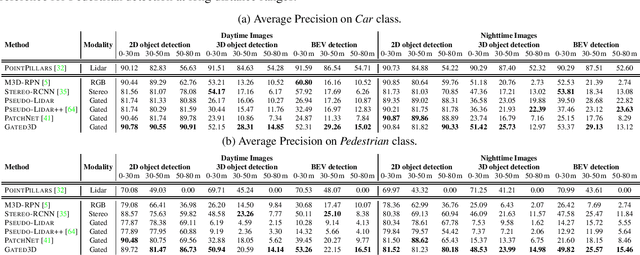
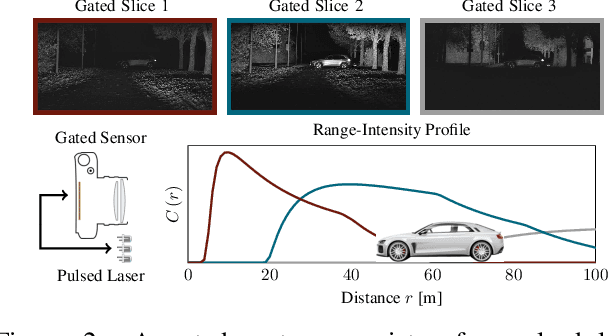
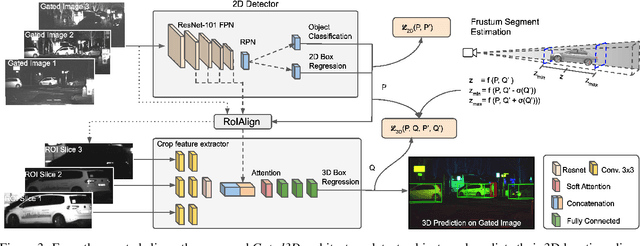
Abstract:Today's state-of-the-art methods for 3D object detection are based on lidar, stereo, or monocular cameras. Lidar-based methods achieve the best accuracy, but have a large footprint, high cost, and mechanically-limited angular sampling rates, resulting in low spatial resolution at long ranges. Recent approaches based on low-cost monocular or stereo cameras promise to overcome these limitations but struggle in low-light or low-contrast regions as they rely on passive CMOS sensors. In this work, we propose a novel 3D object detection modality that exploits temporal illumination cues from a low-cost monocular gated imager. We propose a novel deep detector architecture, Gated3D, that is tailored to temporal illumination cues from three gated images. Gated images allow us to exploit mature 2D object feature extractors that guide the 3D predictions through a frustum segment estimation. We assess the proposed method on a novel 3D detection dataset that includes gated imagery captured in over 10,000 km of driving data. We validate that our method outperforms state-of-the-art monocular and stereo approaches at long distances. We will release our code and dataset, opening up a new sensor modality as an avenue to replace lidar in autonomous driving.
Latent Space Oddity: Exploring Latent Spaces to Design Guitar Timbres
Oct 29, 2020
Abstract:We introduce a novel convolutional network architecture with an interpretable latent space for modeling guitar amplifiers. Leveraging domain knowledge of popular amplifiers spanning a range of styles, the proposed system intuitively combines or subtracts characteristics of different amplifiers, allowing musicians to design entirely new guitar timbres.
Artificial Intelligence Based Malware Analysis
Apr 27, 2017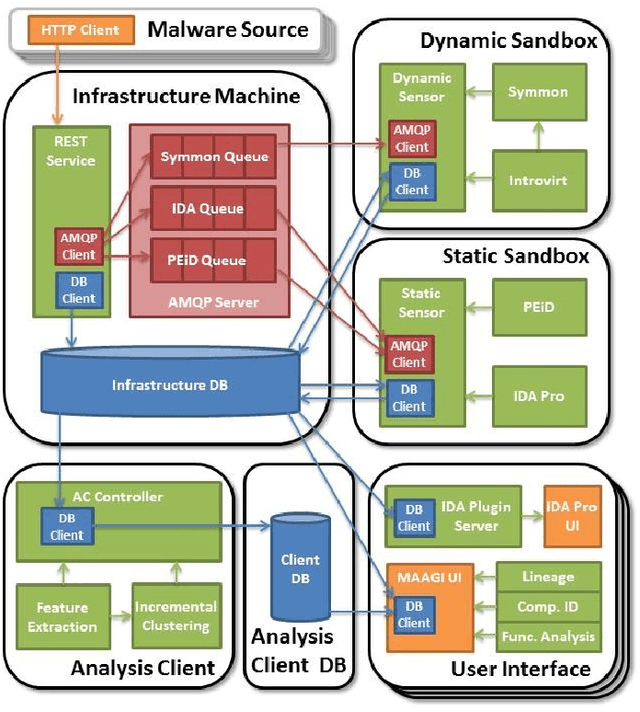
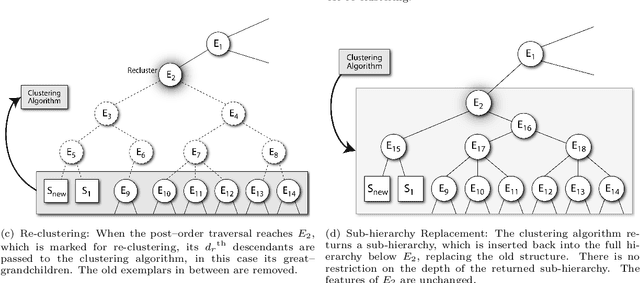

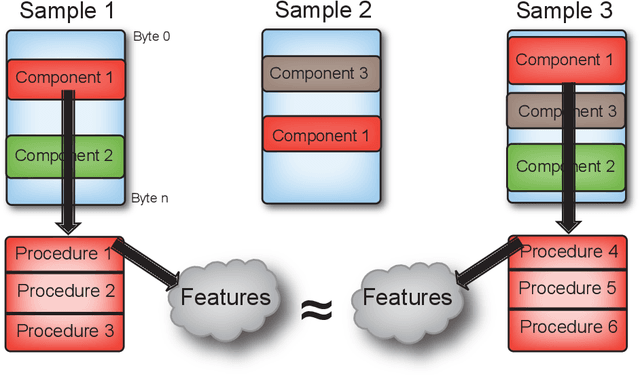
Abstract:Artificial intelligence methods have often been applied to perform specific functions or tasks in the cyber-defense realm. However, as adversary methods become more complex and difficult to divine, piecemeal efforts to understand cyber-attacks, and malware-based attacks in particular, are not providing sufficient means for malware analysts to understand the past, present and future characteristics of malware. In this paper, we present the Malware Analysis and Attributed using Genetic Information (MAAGI) system. The underlying idea behind the MAAGI system is that there are strong similarities between malware behavior and biological organism behavior, and applying biologically inspired methods to corpora of malware can help analysts better understand the ecosystem of malware attacks. Due to the sophistication of the malware and the analysis, the MAAGI system relies heavily on artificial intelligence techniques to provide this capability. It has already yielded promising results over its development life, and will hopefully inspire more integration between the artificial intelligence and cyber--defense communities.
 Add to Chrome
Add to Chrome Add to Firefox
Add to Firefox Add to Edge
Add to Edge